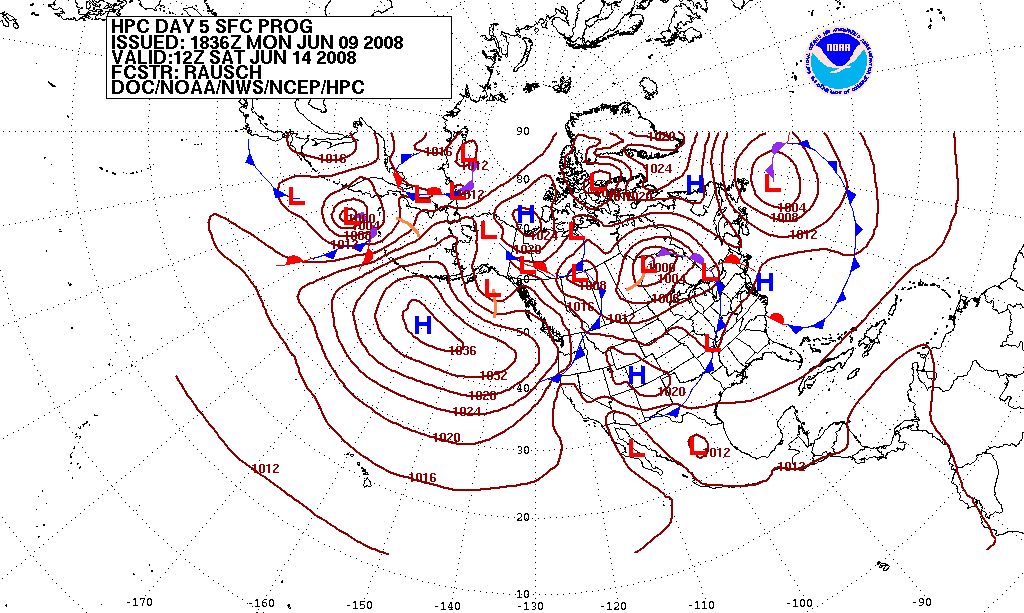
Atmospheric pressure
Atmospheric pressure, also known as air pressure or barometric pressure (after the barometer), is the pressure within the atmosphere of Earth. The standard atmosphere (symbol: atm) is a unit of pressure defined as 101,325 Pa (1,013.25 hPa), which is equivalent to 1,013.25 millibars,[1] 760 mm Hg, 29.9212 inches Hg, or 14.696 psi.[2] The atm unit is roughly equivalent to the mean sea-level atmospheric pressure on Earth; that is, the Earth's atmospheric pressure at sea level is approximately 1 atm.
"Air pressure" redirects here. For the pressure of air in other systems, see Pressure.In most circumstances, atmospheric pressure is closely approximated by the hydrostatic pressure caused by the weight of air above the measurement point. As elevation increases, there is less overlying atmospheric mass, so atmospheric pressure decreases with increasing elevation. Because the atmosphere is thin relative to the Earth's radius—especially the dense atmospheric layer at low altitudes—the Earth's gravitational acceleration as a function of altitude can be approximated as constant and contributes little to this fall-off. Pressure measures force per unit area, with SI units of pascals (1 pascal = 1 newton per square metre, 1 N/m2). On average, a column of air with a cross-sectional area of 1 square centimetre (cm2), measured from the mean (average) sea level to the top of Earth's atmosphere, has a mass of about 1.03 kilogram and exerts a force or "weight" of about 10.1 newtons, resulting in a pressure of 10.1 N/cm2 or 101 kN/m2 (101 kilopascals, kPa). A column of air with a cross-sectional area of 1 in2 would have a weight of about 14.7 lbf, resulting in a pressure of 14.7 lbf/in2.
Mechanism[edit]
Atmospheric pressure is caused by the gravitational attraction of the planet on the atmospheric gases above the surface and is a function of the mass of the planet, the radius of the surface, and the amount and composition of the gases and their vertical distribution in the atmosphere.[3][4] It is modified by the planetary rotation and local effects such as wind velocity, density variations due to temperature and variations in composition.[5]
Records[edit]
The highest adjusted-to-sea level barometric pressure ever recorded on Earth (above 750 meters) was 1,084.8 hPa (32.03 inHg) measured in Tosontsengel, Mongolia on 19 December 2001.[10] The highest adjusted-to-sea level barometric pressure ever recorded (below 750 meters) was at Agata in Evenk Autonomous Okrug, Russia (66°53' N, 93°28' E, elevation: 261 m, 856 ft) on 31 December 1968 of 1,083.8 hPa (32.005 inHg).[11] The discrimination is due to the problematic assumptions (assuming a standard lapse rate) associated with reduction of sea level from high elevations.[10]
The Dead Sea, the lowest place on Earth at 430 metres (1,410 ft) below sea level, has a correspondingly high typical atmospheric pressure of 1,065 hPa.[12] A below-sea-level surface pressure record of 1,081.8 hPa (31.95 inHg) was set on 21 February 1961.[13]
The lowest non-tornadic atmospheric pressure ever measured was 870 hPa (0.858 atm; 25.69 inHg), set on 12 October 1979, during Typhoon Tip in the western Pacific Ocean. The measurement was based on an instrumental observation made from a reconnaissance aircraft.[14]
Measurement based on the depth of water[edit]
One atmosphere (101.325 kPa or 14.7 psi) is also the pressure caused by the weight of a column of freshwater of approximately 10.3 m (33.8 ft). Thus, a diver 10.3 m underwater experiences a pressure of about 2 atmospheres (1 atm of air plus 1 atm of water). Conversely, 10.3 m is the maximum height to which water can be raised using suction under standard atmospheric conditions.
Low pressures, such as natural gas lines, are sometimes specified in inches of water, typically written as w.c. (water column) gauge or w.g. (inches water) gauge. A typical gas-using residential appliance in the US is rated for a maximum of 1⁄2 psi (3.4 kPa; 34 mbar), which is approximately 14 w.g. Similar metric units with a wide variety of names and notation based on millimetres, centimetres or metres are now less commonly used.
Measurement and maps[edit]
An important application of the knowledge that atmospheric pressure varies directly with altitude was in determining the height of hills and mountains, thanks to reliable pressure measurement devices. In 1774, Maskelyne was confirming Newton's theory of gravitation at and on Schiehallion mountain in Scotland, and he needed to measure elevations on the mountain's sides accurately. William Roy, using barometric pressure, was able to confirm Maskelyne's height determinations, the agreement being to be within one meter (3.28 feet). This method became and continues to be useful for survey work and map making.[18]